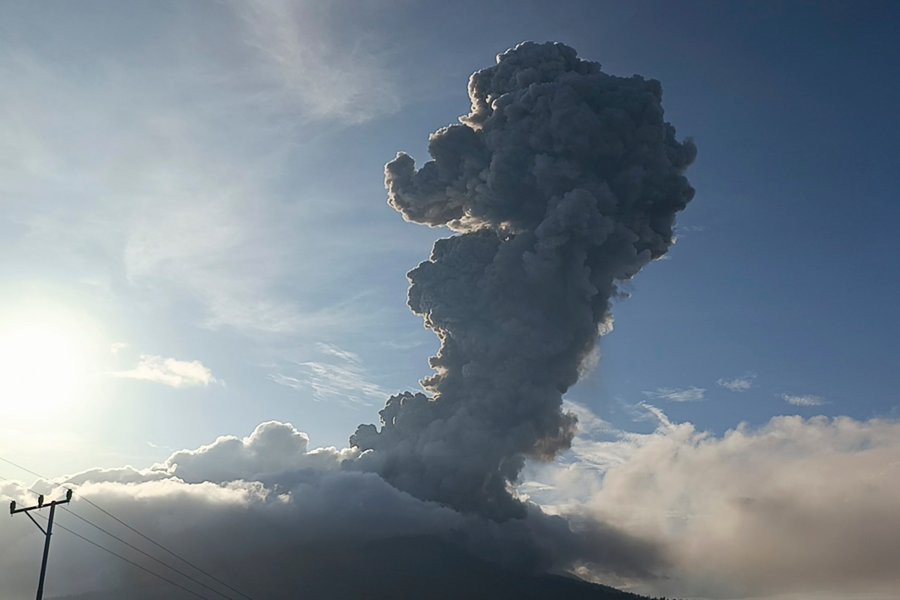On November 8, 2024, the Mount Lewotobi Laki Laki volcano on the island of Flores, Indonesia, exhibited heightened volcanic activity following a significant eruption that resulted in nine fatalities and numerous injuries. The latest eruptions have generated massive columns of hot ash, reaching heights of up to 10 kilometers (6.2 miles) as reported by Hadi Wijaya, the head of the Center for Volcanology and Geological Disaster Mitigation. This recent volcanic activity has prompted authorities to expand the danger zone surrounding the volcano, now set at an 8-kilometer radius due to the widespread dispersal of volcanic materials, including ash, gravel, and smoldering rocks, ejected from the crater.
The eruptions have had devastating impacts on local infrastructure, with extensive damage reported to schools, churches, and thousands of homes across the majority-Catholic island. Local experts have observed significant craters caused by falling rocks, further emphasizing the severity of the volcanic activity. Authorities are working diligently to ensure the safety of the residents, advising the thousands displaced not to return to their homes as they implement evacuation plans for around 16,000 individuals from the danger zone. Thousands have already sought refuge in makeshift emergency shelters.
The eruptions have dramatically affected nearly 10,000 people living in ten villages, with over half relocating to safer areas. Kanesius Didimus, the head of the local disaster management agency, reported that more than 2,300 homes and public facilities sustained damage or collapsed due to the weight of volcanic debris. Additionally, crucial roadways connecting areas around the volcano have been obstructed, complicating relief efforts and hindered access for aid workers and supplies.
In response to the ongoing crisis, rescue teams comprising police and soldiers are actively conducting searches in distressed locations to ensure all residents have evacuated from the risk zones. Nearly 6,000 displaced individuals are receiving assistance at three designated evacuation sites, while logistical support and relief supplies are being coordinated through various agencies. The National Disaster Management Agency outlined plans for the relocation of residents from the worst-affected villages within six months, ensuring that families awaiting rehousing receive monthly compensation.
This recent bout of volcanic activity follows a similar incident earlier in the year when approximately 6,500 residents were evacuated due to the initial eruptions of Mount Lewotobi Laki Laki, which earlier forced the closure of Fransiskus Xaverius Seda Airport. Although the previous eruptions did not result in casualties or significant damage, the crisis has once again led to airport closures across the region due to safety concerns associated with volcanic ash affecting air navigation.
Mount Lewotobi Laki Laki is one of two stratovolcanoes in East Flores, referred to as the husband-and-wife mountains, reflecting the cultural significance and folklore surrounding them. At 1,584 meters (5,197 feet), it is one of Indonesia’s 120 active volcanoes, which are prevalent in the country due to its positioning along the Pacific Ocean’s “Ring of Fire.” Indonesia is characterized by its geological volatility, making it susceptible to various natural disasters such as volcanic eruptions, earthquakes, and landslides, thus highlighting the need for ongoing monitoring and disaster preparedness measures.

